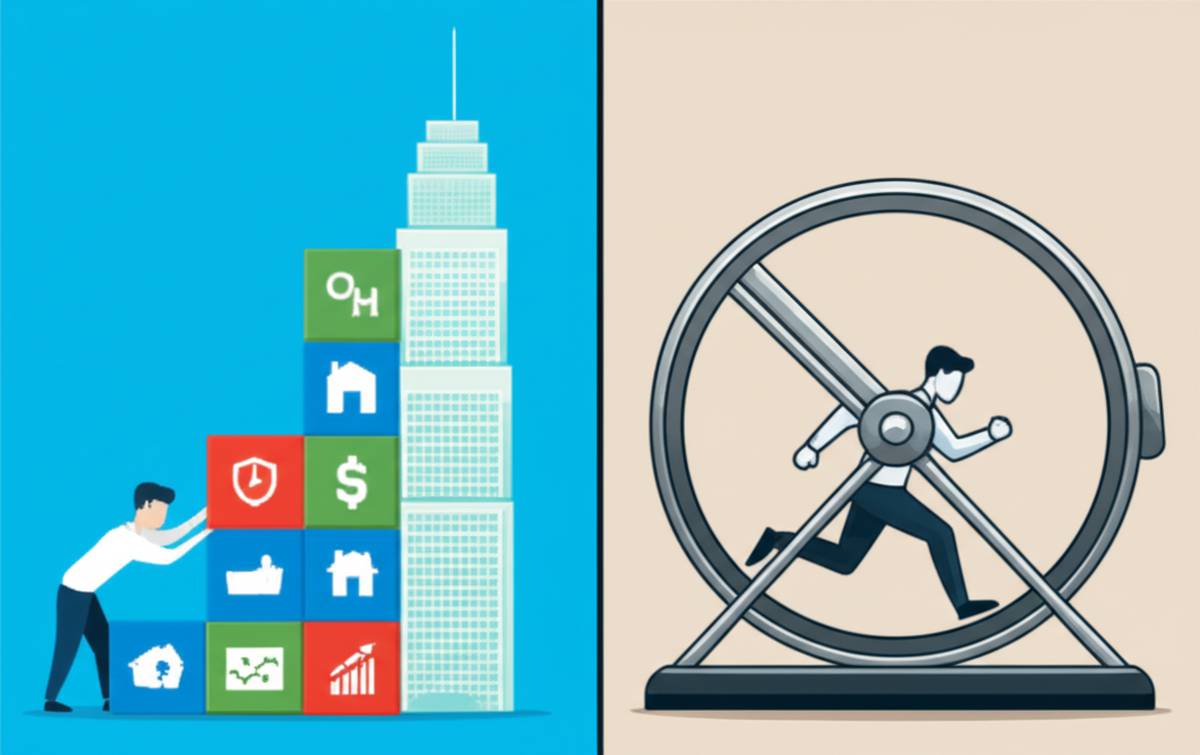Many people use the terms meditation and mindfulness interchangeably, but while they are closely related and often practiced together, there’s a key difference between meditation and mindfulness. Understanding this difference can help you choose the right practice for your needs and deepen your understanding of yourself.
What is Meditation?
Meditation is a specific practice that involves training your mind to focus on a particular object, thought, or activity. It’s often practiced in a quiet setting, with the goal of achieving a state of mental clarity and emotional calmness.
Types of Meditation
There are many different types of meditation, each with its own techniques and goals. Some popular types include:
- Mindfulness Meditation: This involves focusing on your breath and observing your thoughts and feelings without judgment. More on this later.
- Transcendental Meditation (TM): This uses a mantra, a specific word or sound, to quiet the mind.
- Loving-Kindness Meditation (Metta): This focuses on cultivating feelings of love and compassion for yourself and others.
- Walking Meditation: This involves focusing on the sensation of walking and being present in your body.
- Guided Meditation: This involves listening to a guided narration that helps you visualize and relax. Many resources for guided meditation can be found online.
What is Mindfulness?
Mindfulness, on the other hand, is a quality of being present and fully engaged in the current moment, without judgment. It’s about paying attention to your thoughts, feelings, and sensations as they arise, without getting carried away by them. You can weave mindfulness into the path of financial independence and building wealth by being mindful of your spending habits and investment decisions.
Practicing Mindfulness
Mindfulness isn’t just a specific technique; it’s a way of being. You can practice mindfulness in any situation, whether you’re eating a meal, walking in nature, or even doing the dishes. The key is to pay attention to what you’re doing and how you’re feeling in the present moment. Try incorporating mindfulness as a way to start here on your journey toward a more fulfilling life.
Key Differences: Meditation vs. Mindfulness
The difference between meditation and mindfulness can be summarized as follows:
- Meditation is a practice; mindfulness is a quality. Meditation is a specific technique you use to train your mind. Mindfulness is a way of being present in the moment.
- Meditation often involves a focused object; mindfulness is more open. Meditation often involves focusing on a particular object, such as your breath. Mindfulness is more about observing whatever arises in your awareness.
- Meditation can be practiced in a formal setting; mindfulness can be practiced anywhere. Meditation is often practiced in a quiet setting, while mindfulness can be practiced in any situation.

Benefits of Meditation and Mindfulness
Both meditation and mindfulness have been shown to have numerous benefits for your mental and physical health, including:
- Reduced stress and anxiety
- Improved focus and concentration
- Increased self-awareness
- Improved emotional regulation
- Reduced pain
- Improved sleep
- Increased compassion and empathy
A wealth of research supports these benefits. For example, the Mindful website offers excellent resources on the science of mindfulness.
How to Integrate Both into Your Life
You can benefit greatly by integrating both meditation and mindfulness into your daily life. Here’s how:
- Start with Meditation: Begin with a short meditation practice each day. Even 5-10 minutes can make a difference. Try different types of meditation to find one that resonates with you.
- Practice Mindfulness Throughout the Day: Bring mindfulness into your daily activities. Pay attention to your breath, your body sensations, and your thoughts and feelings.
- Be Patient: Both meditation and mindfulness take time and practice. Be patient with yourself and don’t get discouraged if you don’t see results immediately.
- Combine Both: Use your meditation practice to cultivate mindfulness, and then use mindfulness to enhance your daily life.
- Continue to learn. Stay up-to-date on the latest tips and tricks for building wealth, and living a purposeful life. Check out our blog for the latest articles!
Conclusion
Understanding the difference between meditation and mindfulness allows you to approach these practices with greater intention and effectiveness. While meditation is a specific technique to train your mind, mindfulness is a way of being present in every moment. By integrating both into your life, you can unlock numerous benefits for your well-being and cultivate a richer, more meaningful existence.
FAQs
What’s the easiest way to start meditating?
Start with a guided meditation app or video. There are many free resources available online that can guide you through the process. Focus on your breath and gently redirect your attention back to it whenever your mind wanders.
How often should I practice mindfulness?
You can practice mindfulness throughout the day, every day. Even short moments of mindful awareness can make a difference. Try to incorporate mindfulness into activities like eating, walking, and even brushing your teeth.
Is mindfulness the same as emptying my mind?
No, mindfulness is not about emptying your mind. It’s about observing your thoughts and feelings without judgment. You don’t need to try to stop your thoughts; simply notice them as they arise and let them pass.


